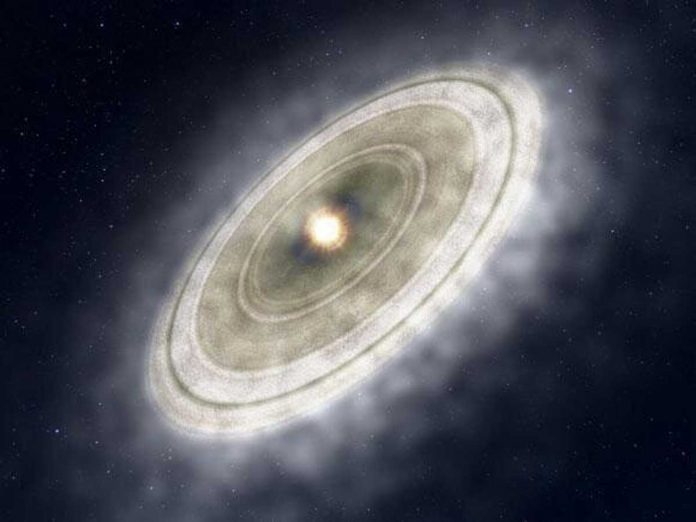Debris disks are tenuous belts of dust that surrounds the main-sequence stars. These debris disks are thought to be produced when asteroids or other planetesimals collide. Most of the main-sequence stars have debris disks, so, it is a common phenomenon. But these disks are hard to detect and chances are there that the fraction is higher.
Scientists can only detect only those debris disks in our system that have more luminous magnitude than the solar system’s Kuiper Belt generated disks.
The dust in debris disks is a significant element to study. It also provides scientists the opportunity to detect the planetary system properties.
The largest dust grains are measured by ALMA telescope. This particular telescope remains unaffected by stellar winds.
The distribution of large dust grains provides insight about the effects of gravity and collisions on dusts.
Scientists call it “chaotic zone” where a planet has an extended region and within which dust has no stable gravitational orbits. This chaos results in a gap whose width depends on a planet’s mass. A planet situated on a debris disk can create a gap like this.
If we measure the gap’s dimensions, we can use it to deduce the mass of the planet. Without this process, obtaining exoplanet parameter would have been very difficult.

